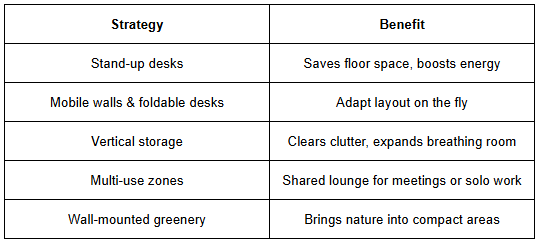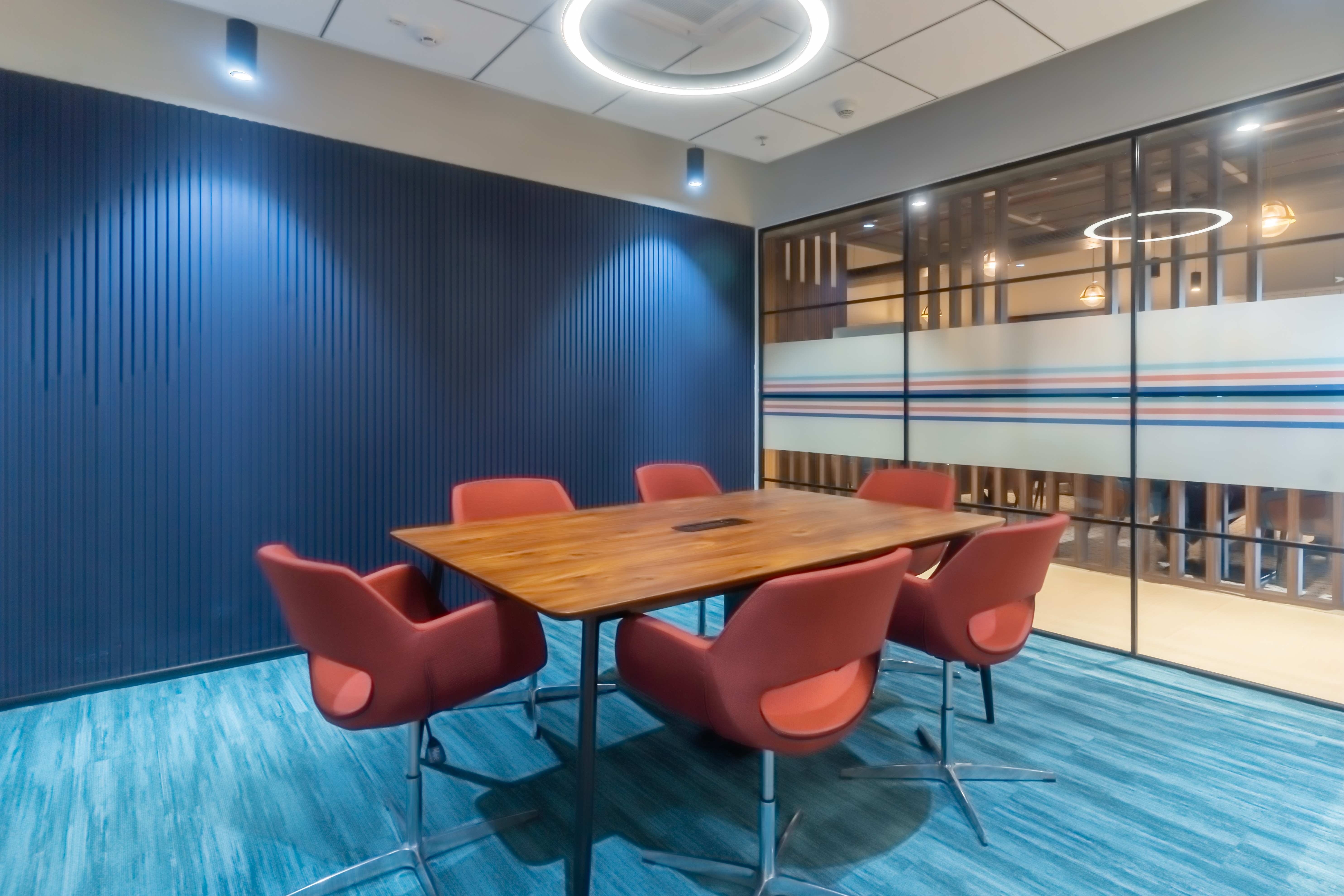What if the design of your workspace could influence your ability to improve your mood, sharpen your focus, and produce better work? Office design psychology is a field that combines environmental psychology, architecture, and user experience. According to a 2024 study, workplaces with ergonomic zones and biophilia design saw a 15% boost in productivity. Design is an unseen force that shapes behavior.
This blog explores why office design ideas are not just about aesthetics—they are strategic tools to maximize well‑being and creative output. Let us dive in.
How Office Layouts Influence Mood, Focus, and Productivity
Culture of layout: open, planted, ergonomic, and zoned; each choice has a message. According to numerous studies with over 4,000 workers, a well-designed workspace results in high employee satisfaction and a 38% boost in productivity.
- Mood: Greenery and natural light uplift the soul. According to Awfis insights, offices with daylight experience 20% fewer sick days.
- Focus: Sound-absorbing surfaces, pods, and quiet areas can cut down on disruptions by as much as 30%.
- Productivity: Activity-Based Working (ABW) setups—where people choose desks per task—show 2xx higher engagement.
In short: well‑thought office design ideas turn space into advantage.
Office Design Ideas That Align with Employee Well‑Being
Well-being isn’t fringe—it’s foundational. Here are three smart office design ideas that put people first.
- Biophilic Breakouts
- Introduce plant walls or indoor shrubs.
- Use wood-like finishes and natural textiles.
Why it matters: Employees in green-rich areas report 20% less stress
- Functional Essentials
- Height-adjustable desks, lumbar-support chairs, and sit–stand stations.
- Task lighting to reduce eye strain.
Why it matters: Flexible furniture is a core element among top office design psychology tactics
- Defined Zones
- Quiet cabins, collaboration hubs and/or visualization walls.
- Acoustic pods for calls, community areas for breakouts.
Why it matters: This reflects ABW’s emphasis on matching space with task.
Smart Office Design Ideas for Small Office Spaces
Small spaces? Not a limiting factor. Small offices may actually be an expression of ideas for small office environment design:

These office design for small office environments show how clever design beats bigger square footage.
The Role of Office Decor Ideas in Boosting Creativity and Comfort
Decor is not fluff—it fuels creativity. According to Awfis, decor that blends local character with global cues boosts innovation by 12%. Use wall art, motivational typographic prints, and rotating murals to spark dialogue.
- Balance bold feature walls with neutral zones to prevent sensory overload.
- Add rugs, cushions, and privacy screens for texture and coziness.
These office decor ideas support focus and foster belonging—key to long-term engagement.
Open vs. Closed Layouts: Which Works Better Psychologically?
The age-old office layout dilemma: open collaborative spaces, or private focus? Following reveals:
- Open plan = more interaction, less privacy. Noise distractions = 30–35% reductions in deep-focus work.
- Closed plan = less disturbance, but social energy suppressed.
- Hybrid = the best of both worlds with private rooms for focused time, open lounges for social working, and pods for calls.
A balanced hybrid layout reflects office design psychology’s principle of choice—and delivers measurable gains in mood, focus, and culture .
Final Thoughts: Using Office Design Psychology to Build Better Workplaces
Great office design isn’t about decoration—it’s about creating environments where humans thrive. Incorporating office design ideas, even on a small scale, yields measurable returns in satisfaction, well‑being, and output.
Awfis understands this and crafts workspaces grounded in office design psychology, blending local influences with international best practices. From compact offices to large hubs, thoughtful design makes the difference.
Connect with us to explore office design ideas tailored to your space and people—then watch your culture and performance flourish.
Frequently Asked Questions:
1. What is office design psychology?
Office design psychology is the study of how workspace layouts, colors, lighting, and furniture impact employee mood, behavior, and productivity in an office environment.
2. How do office design ideas affect employee productivity?
Smart office design ideas improve focus, reduce stress, and enhance collaboration—directly boosting productivity and well-being.
3. What are the best office design ideas for small offices?
Top office design ideas for small offices include modular furniture, vertical storage, natural light, and multi-use zones to maximize space and efficiency.
4. How does office decor influence workplace behavior?
Office decor ideas like inspiring art, calming colors, and greenery can elevate mood, spark creativity, and support a positive workplace culture.
5. Open vs. closed office layouts: which is better?
Each has pros—open layouts foster collaboration, while closed layouts support focus. The best office design blends both for flexibility and productivity.




